
发布时间:2022-11-01
瑞士手工艺与挑战
“唧唧复唧唧,木兰当户织。”《木兰辞》的开篇名句就是在模拟织布机纺织时发出的声音。手工纺织的发明可以追溯到公元前6000年的西亚,比纺纱稍晚出现,现已流传数个世纪。瑞士博采多元文化之长且注重环保,因此长期以来都非常喜爱这一返璞归真的艺术形式。手工纺织是一种非常古老且主要的纺织品生产方式。在古代,手工纺织是农村地区重要的收入来源,在世界范围内被广泛采用。它对基础设施的要求不高,也不依赖农作季节,因此成为一项受欢迎的谋生方式,尤其是它能够帮助女性实现经济上的独立自由。
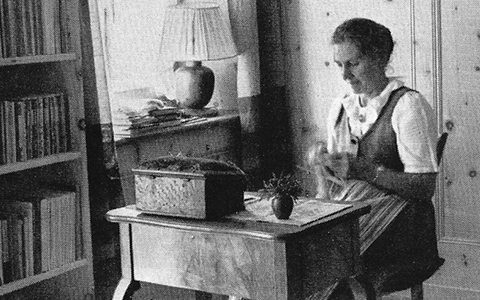
然而,随着工业化生产的纺织品大量涌入市场,瑞士传统工艺的没落也未能幸免。由于工业化的手工艺品(大多来自亚洲)以较低的价格进入市场,压制了传统手工艺品市场的发展,瑞士的许多手工纺织厂因此关闭。传统手工艺有利于多样性和资源可持续利用,可惜却一度处于衰退甚至灭绝的边缘。
千禧年是一个转折点。品质、环保、传统和内涵这几个词自然成为了搜索产品时最受欢迎的标签。为了恢复这项古老的手工艺,瑞士仅存的几家手工纺织基金会开始采取行动。经过现代改良,人们开始重新审视这一项传统遗产。
"我们的产品是有价值的,它们因此被传承",这句话来自瑞士泰桑达(Tessanda)公司,它是瑞士三大专业手工纺织厂之一,公司员工全部为女性,专业从事手摇纺织机的纺织工作。泰桑达于1928年在Sta.Maria Val Müstair成立,当时是为了给Münstertal的妇女提供一份受人尊敬的工作,并提供公认的专业培训,现在仍然如此。它是为数不多的幸存的手工纺织基金会之一,为年轻人提供专业培训,从而传承手工纺织的古老创意之美。
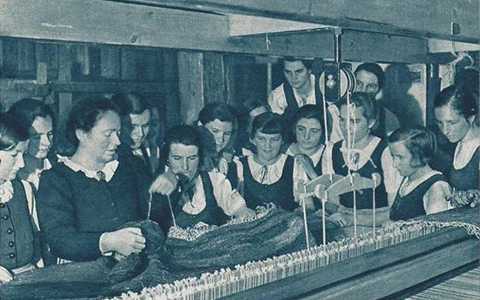
当地的纺织厂——泰桑达(Tessanda)
几台运转中的传统织布机发出 "丝丝 "的声音,几位纺织工专心致志地工作着,一边手抓着梭子推线,一边脚踏在织布机上织着一根又一根的线。纺织的过程几乎没有任何乐趣可言。每根线都由手工编织,工艺精细,每次梭子越过一条线,就需要在木板上推一下,以固定布纹。在织布过程中即使只出现一丁点儿错误,也要把线拆掉,全部的工作就可能需要重新开始。因此织工需要特别地敏捷和小心。
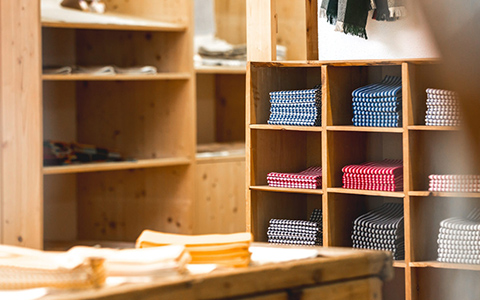
作为一家基金会,泰桑达几十年来一直将专业手工纺织作为一项独立的职业进行保护和发展。它确保了妇女能有一份不错的工作,从而在Val Müstair实现经济独立。泰桑达目前雇用了17名技艺精湛、知识渊博的手工织工和女裁缝。她们在工作中投入了大量的热情和努力,一丝不苟,非常专业。
如今,泰桑达基金会训练有素的织工仍然像九十四年前那样,按照古老的传统,完全用手工制作高品质的纺织品。工厂坚持用木制织布机和手工方式纺织,其中一些木制织布机已经有100多年的历史。同时,工厂专门就如何设计现代化的图案进行培训,使手工纺织对年轻一代更有吸引力。
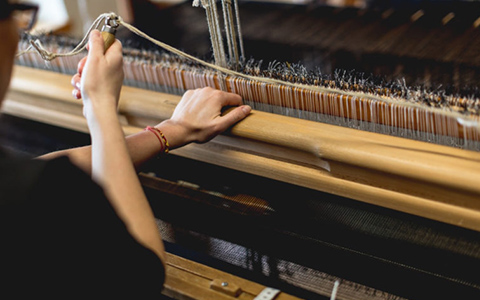
为了提高人们对珍贵的传统手工纺织工艺的认识,泰桑达根据联邦和州的职业规定,为年轻人提供从头开始学习手工纺织的机会。他们还组织游客参观车间,观摩25台传统织机。参观团一般由熟练的老员工带领。她们先会介绍泰桑达的百年历史,然后向游客解说并展示手工纺织的各个精密的步骤。最后,泰桑达会为游客提供车间互动环节,让他们可以参与织造过程。可以见证这个古老的手工艺基金会的独特精神,以及它在传承本真的同时打破传统设计框架的大胆设想,机会实属难得。
这些提升手工纺织认识的活动,让人们不仅投身于传承这项工艺本身,还致力于传承民间智慧。由于手织不使用任何化石燃料,它作为一种环保的纺织品制造方式得到了越来越多的认可。艺术价值和环境价值的结合,逐渐带来了手工纺织业的复苏。
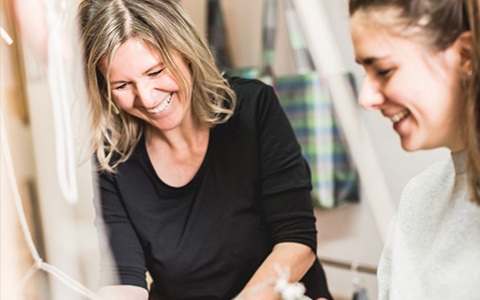
我们真诚地希望更多的人在读到这篇文章后能认识到传统手工纺织的美,并将它传播开来。雷梭勒家族办公室重视传统手工艺的传承,因此鼓励我们所服务的家庭参与瑞士当地的工作坊活动,帮助传承瑞士的工匠精神。我们非常乐意为我们的家庭客户安排相关的参访和游览,让大家获得手工纺织的第一手体验!
参考文献
文:
Handweberei Tessanda - Sta. Maria Val Müstair. zur Startseite. (n.d.). Retrieved August 26, 2022, from https: //tessanda.ch/
Dahlmer, Z. (2021, June 16). The Swiss culture of craftsmanship. Alpine Hikers. Retrieved August 26, 2022, from https://alpinehikers.com/the-swiss-culture-of-craftsmanship-2/
图:
所有图片均源于泰桑达官网
Original English Text
Swiss Craftsmanship: Hand Weaving
"Click-Clack, Click-Clack, Mulan Weaving". This renowned line from the Ballad of Mulan simulates the sound made by a loom when weaving. Tracing back to 6000BC, hand weaving was invented later than spinning in West Asia and has been passed down for centuries. Switzerland, with its essence of integrated cultural and focus on sustainability, has been fond of this an ultimate form of art for a long time. Hand weaving is one of the oldest and primary textile production methods. In ancient times, hand weaving was widely practiced worldwide as a valuable source of revenue in rural communities. The characteristics of minimum demand in infrastructure and high independence on agricultural seasons make weaving a great living measure, especially for women, assisting them in achieving financial liberty.
Unfortunately, industrially produced textiles flooded in the market, and Switzerland was not spared from it. Since industrialized handicrafts entered with a lower price, mostly from Asia, it has extensively suppressed the traditional handicraft market, leading to closedown of many handweaving mills in Switzerland. Sadly, traditional handicrafts, which are beneficial to diversity and the sustainable use of resources, were once hanging on the verge of decline or even extinction.
The age of the millennium was a turning point. Fortuitously, quality, sustainability, tradition and meaningfulness have become the most popular tags when searching for products. In order to revive the old craftmanship, the few remaining hand weaving foundations in Switzerland started to take actions. By adapting to modernization, people began to revisit this traditional heritage.
“Because our products are valuable, they are inherited”, quoted from Tessanda, one of the three largest professional handweaving mills in Switzerland, composed entirely of women, dedicated to handloom weaving. Tessanda was founded in 1928 in Sta. Maria Val Müstair. The purpose was and still is to offer Münstertal women a respectable job with recognized specialist training. It is one of the few survived hand weaving foundations devotes to passing down the ancient beauty of creativity in hand weaving by offering professional training to young people.
Local Weaving workshop - Tessand
Several traditional looms in motion emit the sound of "silk" as several weavers focus on the work, pushing threads, grabbing shuttles with their hands, and weaving thread after thread with their feet on the loom. The process of weaving is barely amusing. Each thread is hand-woven with fine craftsmanship, and each shuttle over a line follows by a push on the board to fix the cloth pattern. Even with the slightest mistake in the weaving process, threads would have to be removed, putting all work at risk of starting over. Therefore, weavers need to be agile and extremely careful.
For decades, Tessanda has been a foundation that maintains and promotes professional handweaving as an independent profession. It ensures women an attractive job, thereby reaching financial independence in Val Müstair. Tessanda currently employs 17 skillful and knowledgeable hand weavers and seamstresses. They put lots of passion and effort into their work and are meticulous and professional.
Like 94 years ago, trained weavers at Tessanda today still weave high-quality textiles fully by hand according to old traditions. The workshop persists in hand weave on wooden looms, some of which are over 100 years old. Meanwhile, specialized training over modernized pattern design are applied to make handweaving more appealing to the young generation.
In order to raise awareness of precious traditional handweaving craft, Tessanda offers opportunities for young people to learn hand weaving from scratch in accordance with the federal and canton professional regulations. They also organize workshop tours to visit 25 traditional looms. Adept employees usually lead tours. The tour first introduces the century-old history of the Tessanda, then explains and shows visitors the elaborate steps of hand weaving. In the end, Tessanda offers visitors workshop sessions to participate in the weaving process. It is truly an incredible opportunity to witness the unique spirit of this ancient handicraft foundation, and its bold vision of breaking down traditions in design, while staying true to its heritage.
By raising the awareness of handweaving, people devote themselves to passing on not only the craft itself, but also the folk intelligence. As handweaving does not use any fossil fuel, it is becoming more widely recognized as an environmentally benign method of fabric production. The combination of artistic and environmental values gradually triggers a resurgence in the handweaving industry.
We sincerely hope that more people perceive and will spread the beauty of traditional hand weaving after reading this article. La Soleille Family office values traditional handicraft heritage, therefore encouraging our families to participate in local Swiss workshops and help to pass on the Swiss artisan spirit. We are is more than willing to organize a tour for our family to get a first-hand experience in the handweaving process!
References
Text:
Handweberei Tessanda - Sta. Maria Val Müstair. zur Startseite. (n.d.). Retrieved August 26, 2022, from https: //tessanda.ch/
Dahlmer, Z. (2021, June 16). The Swiss culture of craftsmanship. Alpine Hikers. Retrieved August 26, 2022, from https://alpinehikers.com/the-swiss-culture-of-craftsmanship-2/
Pictures:
All pictures coming from the official website of Tessanda.
本文转载自雷梭勒家族办公室,如有侵权,敬请告知删除。
Sooswiss为您提供
瑞士方向私人管家式的定制服务:
1)家族传承 2)财富管理 3)瑞士投资
4)居留计划 5)税务优化 6)家族治理
更多资讯请登录网站 www.sooswiss.com
